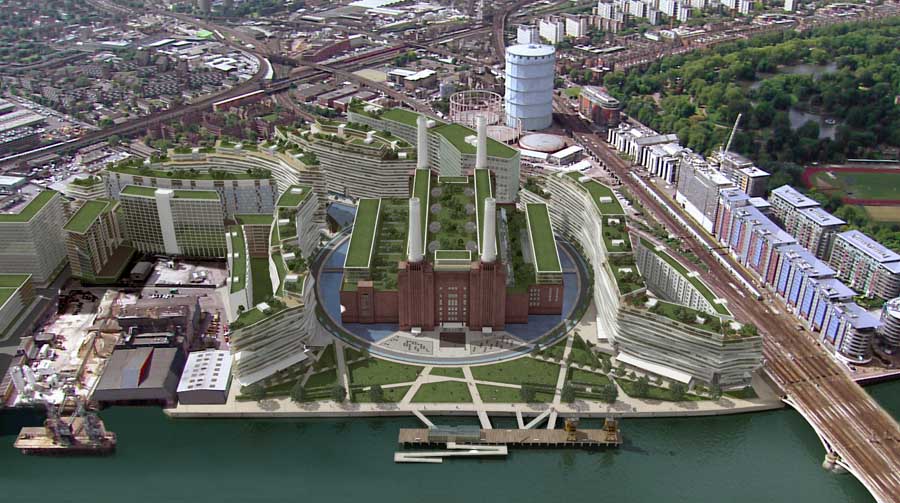URGENT NEWS ON BATTERSEA POWER STATION CHIMNEY DEMOLITION
Thursday 12th June representatives of the BPSCG (Battersea Power Station Community Group) met with Paul Landsberg of Wandsworth Borough Council Planning Department to discuss their concerns regarding the legal and financial protections in place ahead of the imminent demolition of the chimneys, in particular whether the bond is in force and whether it is large enough to cover the cost of rebuilding the chimneys should the developer fail to replace them. What they discovered was deeply disturbing:
The bond money is held in a Malaysian bank, CIMB
The value of the bond for the reconstruction of three and a half chimneys is only £11million.
The value of the bond is based on an estimate supplied by Philip Gullet of the Battersea Power Station Development Company.
This estimate has not been independently checked by cost consultants employed by Wandsworth Council or English Heritage.
The contract sum for the demolition and rebuilding of the chimneys was redacted from the copy of the contract sent to Wandsworth. So it is not possible to compare demolition costs against rebuilding.
The Council does not know if the bond is signed and in force, although the reconstruction contract starts next Monday.
HISTORY REPEATING…
This is all the more alarming in light of what happened when John Broome, the first failed developer of the site, took down but never replaced the west wall and roof, as it remains to this day. The council’s own report in 1989 criticised the woeful lack of safeguards and- some would say- gullibility of the planning officers.
According to Battersea Power Station Community Group the bond money should be held in a British bank if Wandsworth and English Heritage are to have any chance of getting at it in the event of a default. The total value of the bond also needs to be increased substantially if it is to be able to cover the reconstruction of three and a half chimneys, if a default occurs.
With the chimneys reconstruction contract about to start, it is clear that Wandsworth Council and English Heritage are not protecting our cultural heritage -either in checking the proposed value of the bond or making sure the contract is signed and enforceable before the demolition and reconstruction project starts.
With interest rates about to rise, the possibility of the project failing yet again is increasing by the day. If this happens when the chimneys are down, and it turns out the bond money isn’t there (as was the case in 1989 after Broome went bust) the chimneys will never be rebuilt.
We need to rescue Battersea Power Station from these shameless, grey, dozing men who will sell our industrial heritage for peanuts and the enrichment of foreign “investors”. Keep an eye on the revolving door!
Click Battersea Power Station for more blogs
See our Battersea Power Station project pages for more information and videos.
Or visit PlanA our general blog on urbanism, planning and architecture.
Spectacle homepage
Like Spectacle Documentaries on Facebook
Follow SpectacleMedia on Twitter








